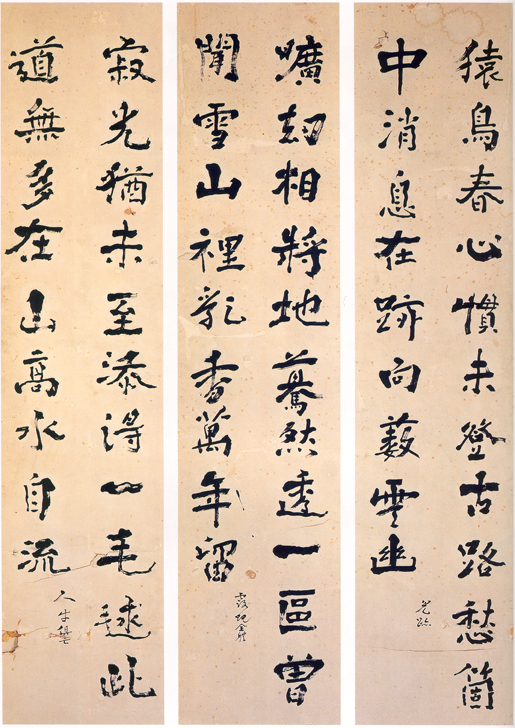Seon Gallery | Master Mangong's Seon Art
Page information
Author ADMIN On14-12-14 22:55 Views5,261 Comments0Related links
Body

Mangong Wolmyeon (1871~1946), “Baekcho si bulmo,” 1938, 130 x 31 cm, Sudeok-sa Museum collection.
Every blade of grass is none other than the Buddha's mother.

Mangong Wolmyeon (1871~1946), “Gyeongheo Seong-u Seonsa Sim-u do,” 1902, 131 x 32 cm (10 panels), Magok-sa collection.
This work is Mangong's rendition of his master Gyeong Heo's (1849~1912) “Sim-u song,” composed in the semi-cursive style. This is included under the same title as a twenty-piece work in the Gyeongheojip.
“Sim-u,” means “to look for an ox.” This ox is set up as a symbol of Buddha nature and the effort of finding this Buddha nature is divided into ten steps which are to be sung, and this song is called the “Sim-u song” or the “Sip-u song,” and the pictures used to teach this is called the “Sim-u do” or “Sip-u do.” The excerpt shown here introduces the first portion of the “Sim-u.” The lines above are from the dharma transmission given from Master Hyujeong to his disciple Beopjang and is included in the Cheongheo dangjip under the title “Beopjang Daesa.”
What a laugh, this one searching for the oxthough mounted on the ox, still searching for itthe sky aglow on the path of fragrant grassthis is such an endless affair


